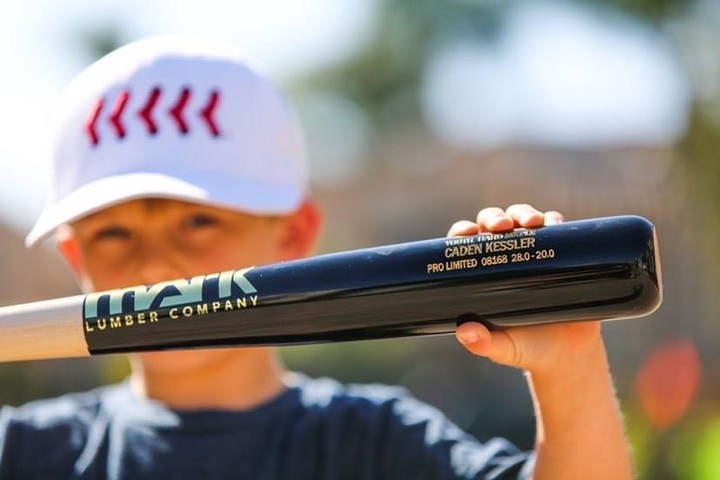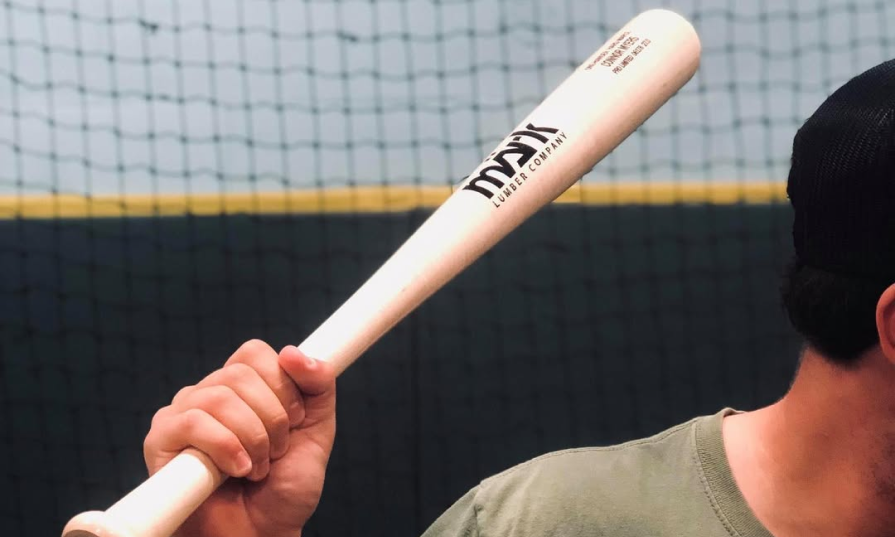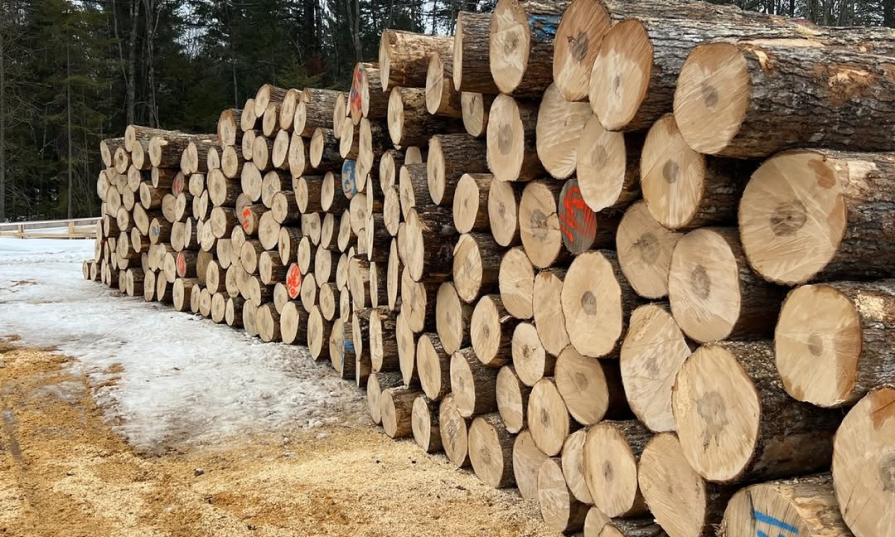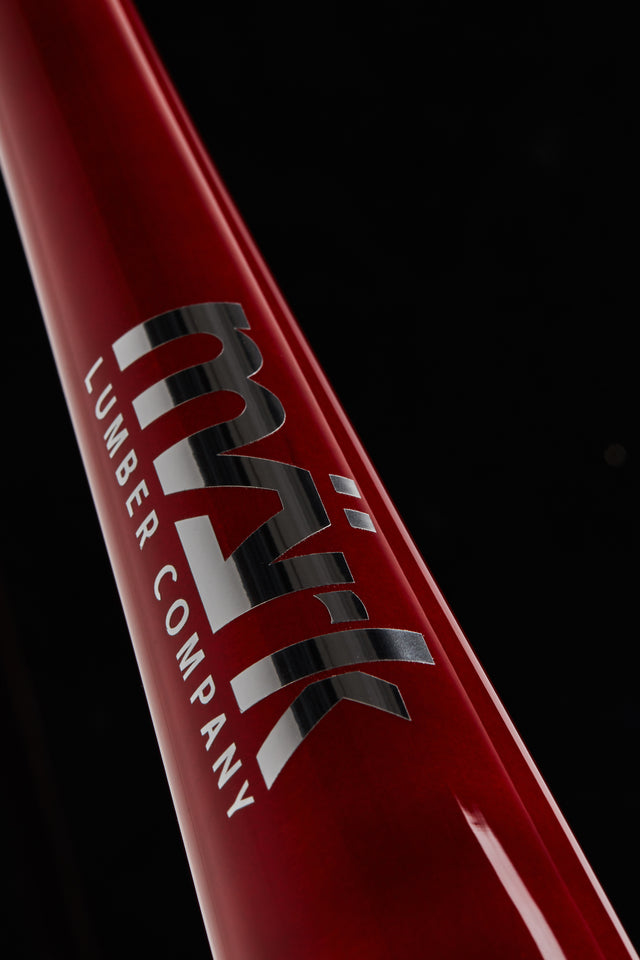
How to Choose the Right Baseball Bat

The right bat can change the way you play. If you’ve ever wondered how to choose a baseball bat that truly fits your swing, it starts with understanding length, weight, material, and feel. The right combination lets you move naturally at the plate—with confidence, control, and power. This guide breaks it all down, so you swing smarter, from your first at-bat to your last.

How Long is a Baseball Bat?
When selecting a custom baseball bat, understanding the difference in bat balance is crucial for tailoring it to your specific needs. A balanced bat evenly distributes weight along the length of the barrel, making it ideal for quick swings and more control. On the other hand, an end-loaded bat shifts the weight toward the barrel’s end, providing more power and a more substantial hit. Depending on your swing style and strength, you can adjust the bat’s feel to match your performance goals. The right balance can make all the difference in how you connect with the ball and drive it further.


Baseball Bat Size and Feel
Baseball bat size goes beyond length—it includes barrel diameter, handle thickness, and weight distribution. Each factor influences how the bat feels and performs.
- Larger barrels boost power and sweet spot range.
- Smaller barrels improve speed and control.
- Thicker handles reduce vibration.
- Thinner handles offer quicker hands and more flex.
The right size supports your natural swing and playing style. It should feel comfortable, balanced, and let you swing freely with confidence.


How Long is a Baseball Bat?
When selecting a custom baseball bat, understanding the difference in bat balance is crucial for tailoring it to your specific needs. A balanced bat evenly distributes weight along the length of the barrel, making it ideal for quick swings and more control. On the other hand, an end-loaded bat shifts the weight toward the barrel’s end, providing more power and a more substantial hit. Depending on your swing style and strength, you can adjust the bat’s feel to match your performance goals. The right balance can make all the difference in how you connect with the ball and drive it further.

Baseball Bat Size and Feel
Baseball bat size goes beyond length—it includes barrel diameter, handle thickness, and weight distribution. Each factor influences how the bat feels and performs.
- Larger barrels boost power and sweet spot range.
- Smaller barrels improve speed and control.
- Thicker handles reduce vibration.
- Thinner handles offer quicker hands and more flex.
The right size supports your natural swing and playing style. It should feel comfortable, balanced, and let you swing freely with confidence.
Baseball bat length shapes your swing—from how early you load to how smoothly you follow through. A bat that’s too long can feel heavy and slow you down. Too short, and you lose reach and power. If it feels end-heavy, it’s likely too long or end-loaded. If it feels too light, you may lose momentum. The right length moves with your body—effortlessly—supporting clean, confident swings without forcing your mechanics or timing.

EDDY J
ML-110
MW38
TS33
ML-271 YOUTH 2-1/4''
FREQUENTLY ASKED QUESTIONS
How do I choose the best baseball bat for my swing?
If you're wondering how to choose the best baseball bats, start by thinking about your swing style, strength, and comfort level. Power hitters tend to benefit from bats with more weight at the barrel (end-loaded), while contact hitters usually prefer lighter, balanced bats for faster swings and better control.
Look at the bat’s length, drop weight, and handle thickness—each of these factors will affect how the bat feels in motion. Material matters too: maple is dense and powerful, ash is flexible and light, and birch offers a blend of both. Testing different models is the best way to know what truly fits.
The best bat isn’t just popular—it’s the one that helps you swing naturally and confidently, every time you step up to the plate.
How do I figure out the best baseball bat sizing for my level?
Proper baseball bat sizing starts with understanding your experience level. If you're a beginner, go for a bat that’s lightweight and balanced—this will help you build good habits without overcompensating for weight or control.
Intermediate and advanced players can experiment with heavier or end-loaded bats that match their swing power. Sizing charts based on height and weight are a great starting point, but they’re just that—a start. Your stance, swing speed, and hitting goals all matter. Try a few bats to see what feels right in motion.
A properly sized bat should let you swing freely, stay balanced, and hit with confidence. The goal is comfort and control, not just compliance with a chart.
What are the key baseball bat measurements I should know?
Understanding baseball bat measurements can make all the difference. The two main measurements are length (in inches) and weight (in ounces). The difference between these two numbers is called the drop.
For example, a 30-inch bat that weighs 20 ounces has a drop of -10. The higher the drop, the lighter the bat. Lighter bats are easier to swing and allow for more speed, while heavier bats, typically with lower drops, can offer more power if you can handle the weight.
It’s also helpful to know barrel diameter and handle thickness, especially for wood bats, as these affect feel and performance. Knowing your bat’s measurements ensures a better fit for your skill level and swing style.
What is considered the right baseball bat size for my body type?
Finding the right baseball bat size means looking at more than just your height. Your strength, swing speed, and comfort level all come into play. Taller or more muscular players may do well with longer, slightly heavier bats that deliver more reach and power.
Smaller-framed players might benefit from lighter, more balanced options that allow for faster swings and better control. It’s also important to consider your hitting style—power hitters may prefer a different setup than contact hitters. Use a size chart as a guide, but trust how the bat feels in your hands.
The right size allows for smooth, effortless movement, helping you stay quick through the zone and consistent at the plate.
How long is a baseball bat for youth players vs. adults?
Bat length varies based on the player’s age, size, and swing mechanics. Youth models typically range from 26 to 30 inches, while adult bats commonly fall between 31 and 34 inches.
But there’s more to it than age alone. A smaller player might struggle with a longer bat, even if it’s technically “correct” for their age group. Likewise, a strong teen may benefit from moving up in size early. The key is control—can the player swing the bat comfortably and stay balanced? A good fit allows for a full swing without hesitation.
Charts help, but testing different lengths in practice is the best way to find what works. A bat that’s too long or too short can throw off timing and confidence.















